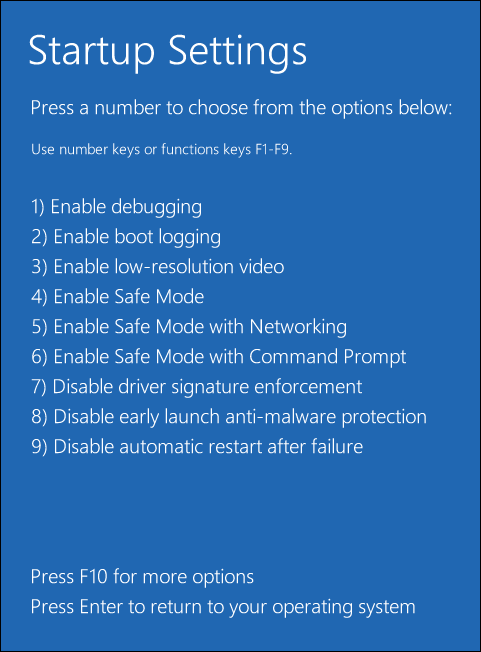If your computer occurs 0x8024200d error code when performing a Windows update, you can try the 4 methods in this post to fix 0x8024200d Windows 10 update error. If you want to recover lost data or deleted files, manage Windows hard drive partition, or perform backup and restore Windows OS, you can turn to MiniTool software.
If you meet this error code 0x8024200d when conducting a Windows update, you can check the 4 methods in this post to fix 0x8024200d error Windows 10.
0x8024200d error means that the new update needs more data to be downloaded, but some update files are missing or corrupted.
Fix 1. Use SFC (File System Checker) to Repair Missing/Corrupt System Files
Step 1. Open Command Prompt Windows 10. You can press Windows + R, type cmd, and press Ctrl + Shift + Enter to run Windows Command Prompt as administrator.
Step 2. Then you can type sfc /scannow in Command Prompt window, and hit Enter. This free Windows built-in tool will start to check and fix missing or corrupted system files on your Windows computer.

Then you can try to update Windows 10 again to see if the 0x8024200d update error has gone.
Fix 2. Temporarily Disable Firewall or Antivirus
Step 1. Click Start, type control panel, and select Control Panel to open Control Panel Windows 10.
Step 2. Next click System and Security -> Windows Defender Firewall, and click Turn Windows Defender Firewall on or off to turn off Windows Firewall temporarily.
You can also uninstall any third-party antivirus software temporarily to avoid antivirus conflict in Windows update.
Then you can try to perform the Windows update again to see if the Windows update error 0x8024200d is fixed. After installing the Windows update, remember to turn on Windows Firewall again to protect your computer safety.
Fix 3. Run Windows Update Troubleshooter to Fix Windows Update Errors
If you meet an error code like 0x8024200d in Windows update, you can run Windows Update Troubleshooter to resolve this problem.
Step 1. Download Windows Update Troubleshooter tool and click the downloaded file (wu10.diagcab) to run the troubleshooter. Follow the instructions to utilize Windows Update Troubleshooter tool to find and fix problems with Windows Update.
Step 2. When it finishes the Windows update troubleshooting, you can restart your Windows 10 computer, and run the Windows update again.
Step 3. Click Start -> Settings -> Update & Security -> Windows Update. And click Check for updates button to install available updates on Windows 10.
Fix 4. Delete Downloaded Update Files and Download Windows Update Files Again
If the 0x8024200d error is caused by missing or corrupted update files, you can also delete the old downloaded update files and download the Windows update files again.
Step 1. Start Windows 10 in Safe Mode. You can click Start -> Power, press and hold Shift key and click Restart simultaneously to enter into WinRE.
Next you can click Troubleshoot -> Advanced options -> Startup Settings -> Restart. After the computer boots, you can press F4 to boot into Safe Mode on Windows 10.

Step 2. Open this file path in Safe Mode: C:\Windows\SoftwareDistribution\Download, and delete all files in this folder.
Step 3. Restart your computer and it will start in normal mode. Then you can click Start – > Settings -> Update & Security, and click Check for updates under Windows Update to perform the Windows update again.
Hereto, these are the 4 methods to help you fix 0x8024200d Windows update error, if you have better ways to fix this problem, you can also try them.
How to Recover Data after a Windows Update Error
If you want to recover lost data on Windows 10 computer because of Windows update error, system crash, hard drive failure, virus infection, etc. you can try to use MiniTool Power Data Recovery software. It also works well in Safe Mode on Windows 10. 100% clean software for Windows 10/8/7.
Step 1. Connect the storage device to computer. External hard drive, USB pen drive, SD card and more are supported. Launch MiniTool Power Data Recovery.
Step 2. Select the device to scan like This PC. Then choose the hard drive partition, and click Scan button. The best data recovery software will start scanning for all data on the chosen device, incl. lost and deleted files.
Step 3. Find needed files and click Save button to store the recovered files to a new path.

For Windows OS backup and restore, MiniTool ShadowMaker comes to the first place. It is also a professional data backup and sync program.
![[SOLVED] How to Revive Windows 10 With Recovery Drive | Easy Fix](https://images.minitool.com/minitool.com/images/uploads/2019/05/windows-10-repair-recovery-disk-thumbnail.png)

User Comments :